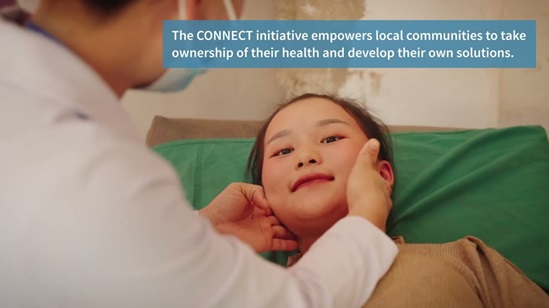Health equity
Health equity is the absence of unfair and avoidable or remediable differences in health among population groups defined socially, economically, demographically, geographically, or otherwise. Health equity is intricately linked to both structural and social determinants of health, as these factors influence the distribution of power and resources, as well as health outcomes, experiences, and opportunities within and across populations.
In the Western Pacific Region, health inequities exist within and across countries, and are widening in some cases. Disaggregated data reveals variations in life expectancy, under-5 mortality, and other key health indicators among different population groups, highlighting the unequal burden of disease. Limited access to healthcare services, often influenced by preventable barriers, including financial constraints, linguistic and cultural differences, and a lack of access to pertinent health information, further influences health inequities in the region. Social determinants, including legal, political, cultural, educational, financial, and environmental factors, contribute to divergent and unequal health trajectories. The impact of these health inequities is profound, leading to compromised overall health and well-being within certain segments of populations.
Beyond the immediate health outcomes, these health inequities have broader societal implications, perpetuating cycles of poverty and limiting opportunities for educational and economic advancement. Addressing health inequities in the Western Pacific Region is not only a matter of public health but also a crucial step toward fostering a more just and inclusive society, with potential long-term benefits for both individuals, their families and society at large. Further, building resilient, people-centered health systems that acknowledge and respond to the needs of different population groups, will not only enhance access to health-care services for all and help achieve UHC, but will also ensure that communities experiencing social inequities receive equitable access to quality care.
People living in the Western Pacific Region have a range of health experiences that are shaped by the social, environmental and commercial determinants of health. Although the Western Pacific Region has made progress on many health-related Sustainable Development Goals, inequities persist across many dimensions of health and impact both health status and access to services. Intersectional health inequities predominantly burden those living in poverty, with the least education, and in and remote areas. Women and LGBTQI+ individuals who live in these conditions experience the most acute inequities.
Health inequities impact health status across the Region, as is evidenced through life expectancy, infectious diseases, injury, and noncommunicable diseases (NCDs). Men in the Region have a lower life expectancy than women. People who reported having no education also have less knowledge of HIV than those with education, and people who are younger are more likely to die by suicide, in the Region. There is also a gender gap in some countries, where women are more likely to die as a result of NCDs, such as heart disease, than men.
Health inequities not only impact health status, but also access to services – particularly reproductive, maternal, newborn, and child health services. For example, people who live in rural areas, and have low incomes and lower levels of education are least likely to receive skilled care during childbirth. Children in poor households with mothers without education are less likely to be immunized. These are some ways the social determinants of health shape health equity in the Western Pacific Region.
Efforts to reduce health inequities necessitate disaggregated data, evidence-based policies and interventions at the primary health care and community levels that consider the unique contextual factors within the diverse populations of the region. In the Western Pacific Region, WHO is guided by principles of proportionate universalism, acknowledging the necessity to address the varying needs of people living in vulnerable situations, while working towards solutions that enhance universal health coverage, high quality education, comprehensive social and labour protections and equitable application of legal frameworks.
The WHO Western Pacific Regional Office supports Member States to address health inequities by:
- Building capacity at national and local level in mapping, measuring and visualizing health inequities and their determinants within and across countries.
- Supporting in the establishment or strengthening of regional and national monitoring systems of social determinants of health and health inequities.
- Building capacity at national and local level on how to design/implement strategies/programs to address inequities in health.
- Supporting efforts that serve to identify and meaningful engage with diverse and representative communities and sectors for health.
- Fostering and facilitating knowledge exchange among Member States and relevant stakeholders on best practices for intersectoral action on how to identify and address health inequities.














